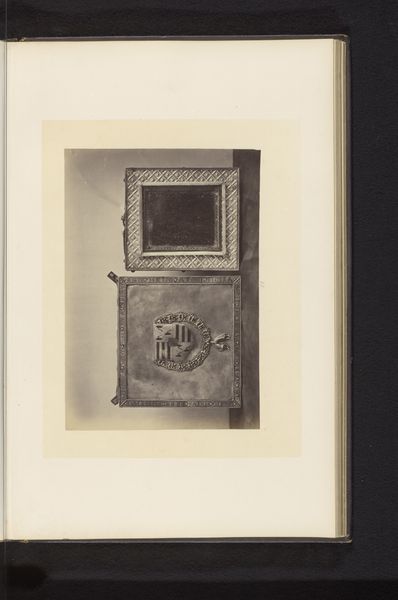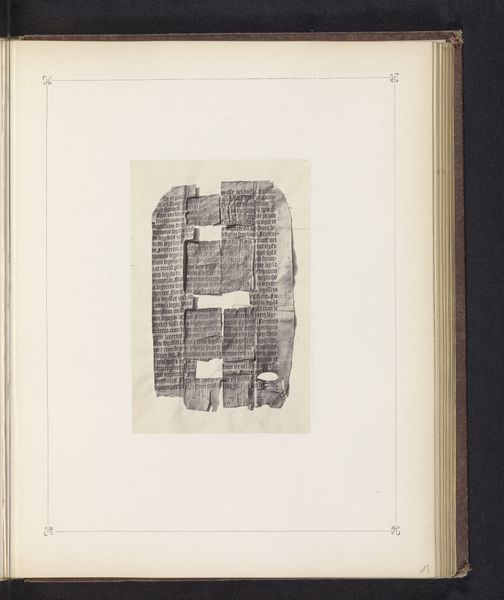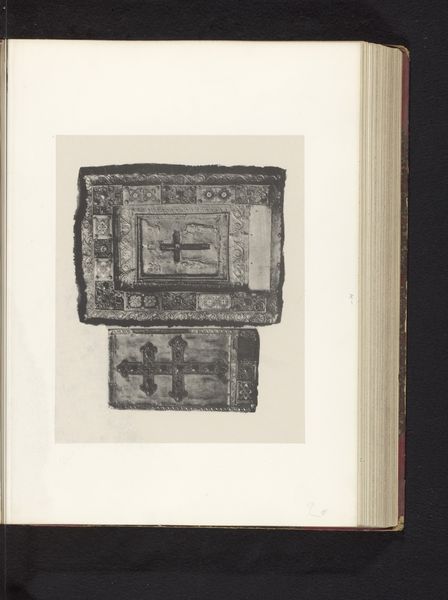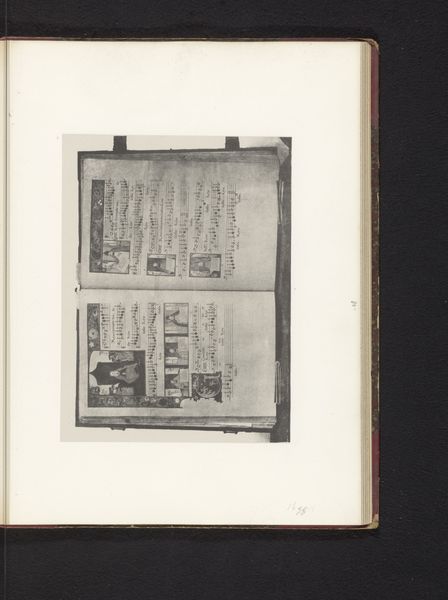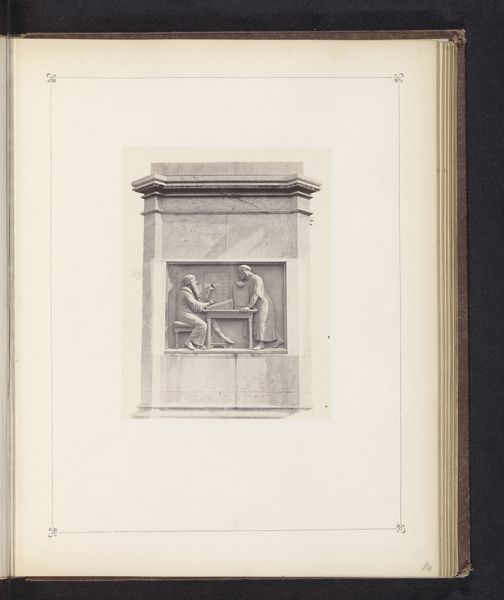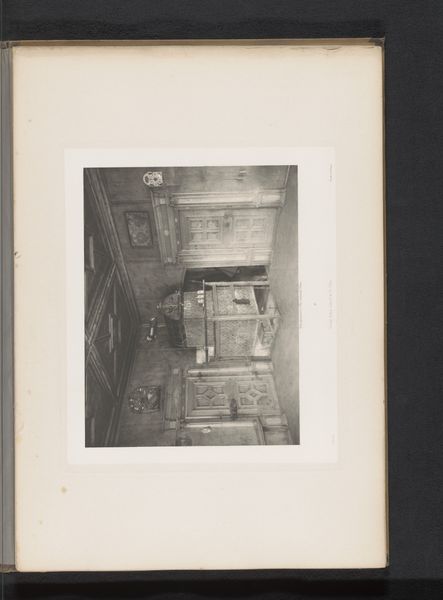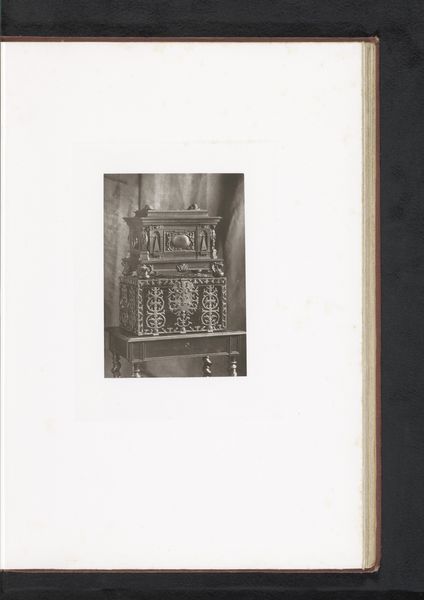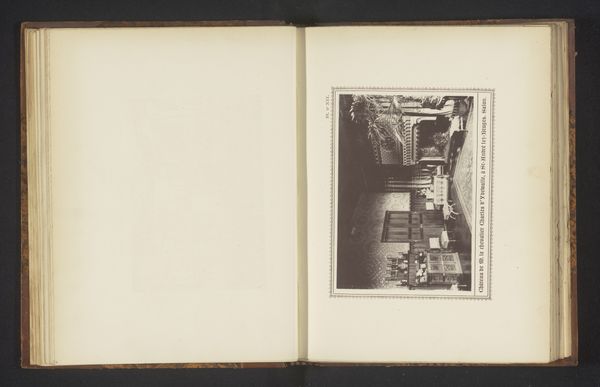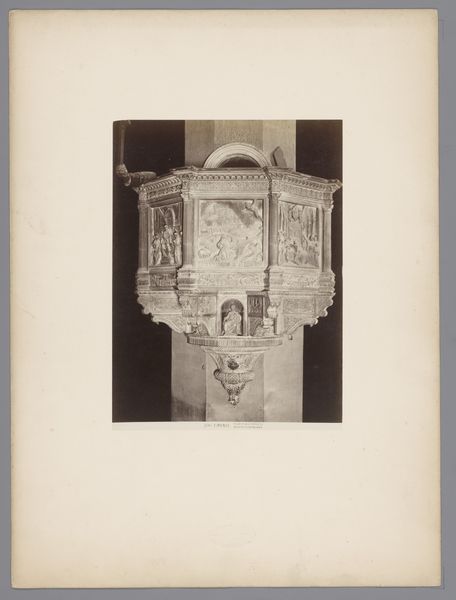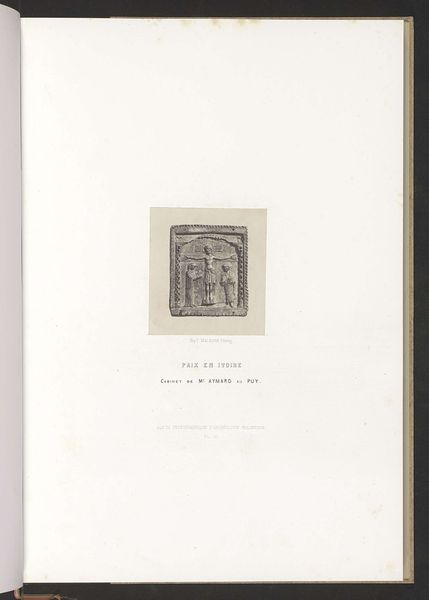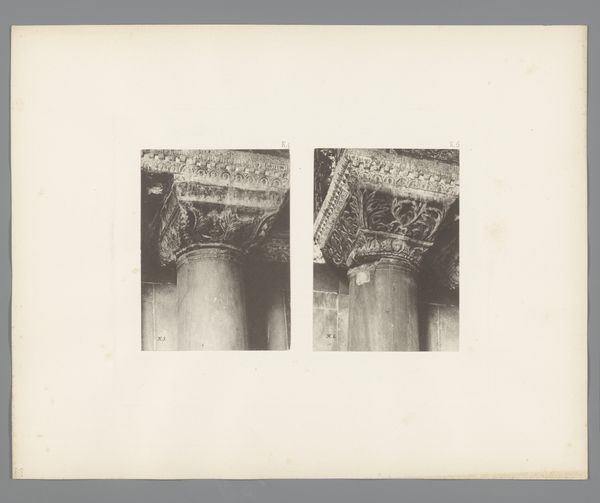
Byzantijns reliëf uit de Sint-Petrus-en-Pauluskerk in Chimay, opgesteld op een tentoonstelling over religieuze objecten uit de middeleeuwen en renaissance in 1864 in Mechelen before 1866
0:00
0:00
print, relief, paper, engraving
#
byzantine-art
#
medieval
# print
#
relief
#
paper
#
engraving
Dimensions: height 180 mm, width 252 mm
Copyright: Rijks Museum: Open Domain
Curator: What a curious image; austere, almost severe. It presents what appears to be two separate reliefs, starkly reproduced. Editor: Indeed. We're looking at a print depicting a "Byzantijns reliëf uit de Sint-Petrus-en-Pauluskerk in Chimay," taken sometime before 1866 by Joseph Maes. What makes it particularly interesting is the context: it captures an object displayed in an exhibition of religious artifacts from the Medieval and Renaissance periods held in Mechelen in 1864. It seems to be an engraving, perhaps on paper. Curator: The sharp contrast emphasizes their geometry. The upper relief, empty within its ornamented frame, reads almost like a void. Below it, the other reveals intricate detail within the emblem, the overall effect is somber, deliberate. The lack of color heightens the intensity. Editor: The act of reproduction is just as critical here. This print served as a kind of document of a historical and cultural event. It brings forth the question of how the past is curated and made accessible. An exhibition like that was more than just showing pretty objects—it participated in defining historical and national narratives. Consider, too, how exhibiting Byzantine works served to contextualize the local artifacts of the medieval period. Curator: A clever point, one that highlights the narrative construction. But look at the compositions themselves. See the way the upper empty relief’s textured edges contrast the flat, shaded center creating an implied depth of negative space—purely aesthetic and balanced beautifully with the ornamented square. Editor: Of course, but we can't ignore how the art world was taking shape then. The relationship between these objects, the church where it was, and its display speaks volumes about societal views toward religion and history and accessibility in the 19th century. It prompts you to wonder about the intended viewers of both the original artifact and this image of the object and how their meanings shift and change. Curator: It’s a compelling point, I must concede. Perhaps, I become too enmeshed in the beauty of form. Editor: I appreciate the historical backdrop because it can also shift our interpretation. Each time we view or display artworks it's filtered through societal perspective. That alone has considerable value for us.
Comments
No comments
Be the first to comment and join the conversation on the ultimate creative platform.
